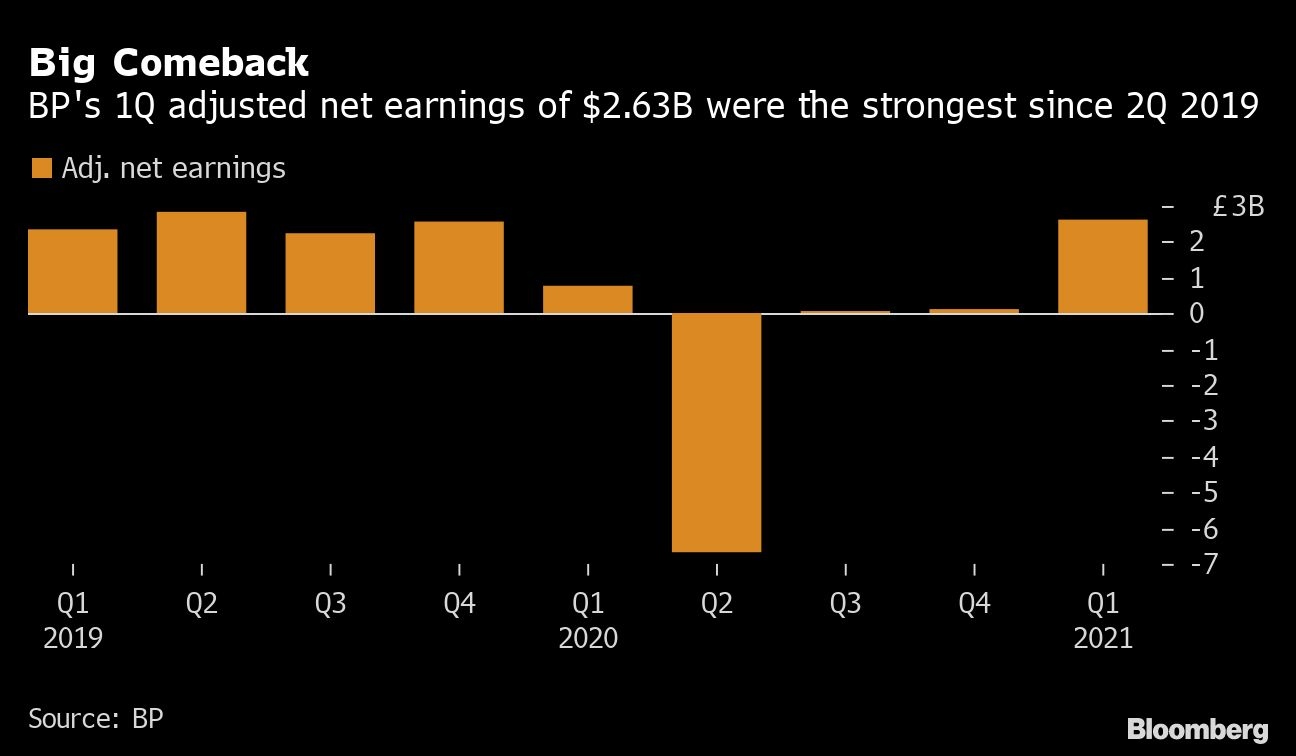Apr 27, 2021
BP lures investors with share buybacks after trading windfall
, Bloomberg News
BP's Strategy Is 'Absolutely Right': Barclays' Rainforth
BP Plc set out to win back shareholders after a difficult year, saying it will begin share buybacks after “exceptional” natural gas trading buoyed earnings.
The gesture, which was flagged earlier this month, is aimed at investors who have shown little love for the company since it cut its dividend by half last year. After lagging its European peers for much of 2020, BP re-jigged its priorities to put boosting shareholder returns ahead of other goals.
“It’s a story of delivering on our promise of competitive cash returns for our shareholders, while at the same time transitioning the company for the future,” Chief Executive Officer Bernard Looney said in a Bloomberg television interview on Tuesday. “It’s been a strong quarter for the company financially.”
BP shares rose as much as 3.6 per cent and were trading 1.2 per cent higher to 300.20 pence at 8:48 a.m. in London.

The London-based company’s buybacks will begin at a modest pace, with US$500 million of repurchases in the second quarter to offset dilution from the vesting of employee share awards. BP said it will return at least 60 per cent of surplus cash flow to shareholders this year, of which it generated US$1.7 billion in the first quarter. It will outline these plans when it publishes its next earnings.
“The message is clear: buybacks are up and running almost a year early,” Sanford C. Bernstein Ltd. analyst Oswald Clint wrote in a research note. Bernstein estimates a further US$1.5 billion to US$2 billion of buybacks could be possible later this year.
BP’s first-quarter adjusted net income rebounded to US$2.63 billion, up from US$791 million a year earlier, before the full impact of the pandemic hit. That surpassed the average analyst estimate of US$1.51 billion. It was the highest profit since the second quarter of 2019.
The strong earnings were driven in part “by an exceptional gas marketing and trading performance,” according to the statement. BP has a large natural gas business in North America, where the market went through massive gyrations in February due to the big freeze in Texas.
“We were well positioned for colder-than-normal weather in the U.S. and in Asia,” Looney said, referring to the Texas freeze in February, and adding the company also profited when a cold snap hit Asia in January, sending liquefied natural gas prices to a record high. The company’s buyback plans don’t depend on trading results, he said.
The gas and low-carbon energy segment, where BP reflects its trading results for the fuel, reported underlying profit before interest and tax of US$2.27 billion in the first quarter, up from US$154 million in the fourth quarter and US$847 million a year earlier.
BP has identified the expertise of its traders, who buy and sell large volumes of fossil fuels every day, as a key way to boost returns as it transitions to selling more renewable electricity. The company is investing in electric car charging networks in Europe and seeking permission to become a retail electricity provider to homes and businesses in several U.S. states.
Net debt was US$33.31 billion at the end of the first quarter, falling below its target threshold of US$35 billion as much as a year earlier than expected. Higher crude prices and the proceeds from asset sales, including a stake in an Omani gas field and the sale of an interest in tech firm Palantir Technologies Inc, helped BP achieve its debt goal.
“We generated around US$11 billion of cash inflow in the first quarter, enabling us to reach our US$35 billion net debt target significantly ahead of plan,” Chief Financial Officer Murray Auchincloss said in the statement.
--With assistance from Christopher Sell.




